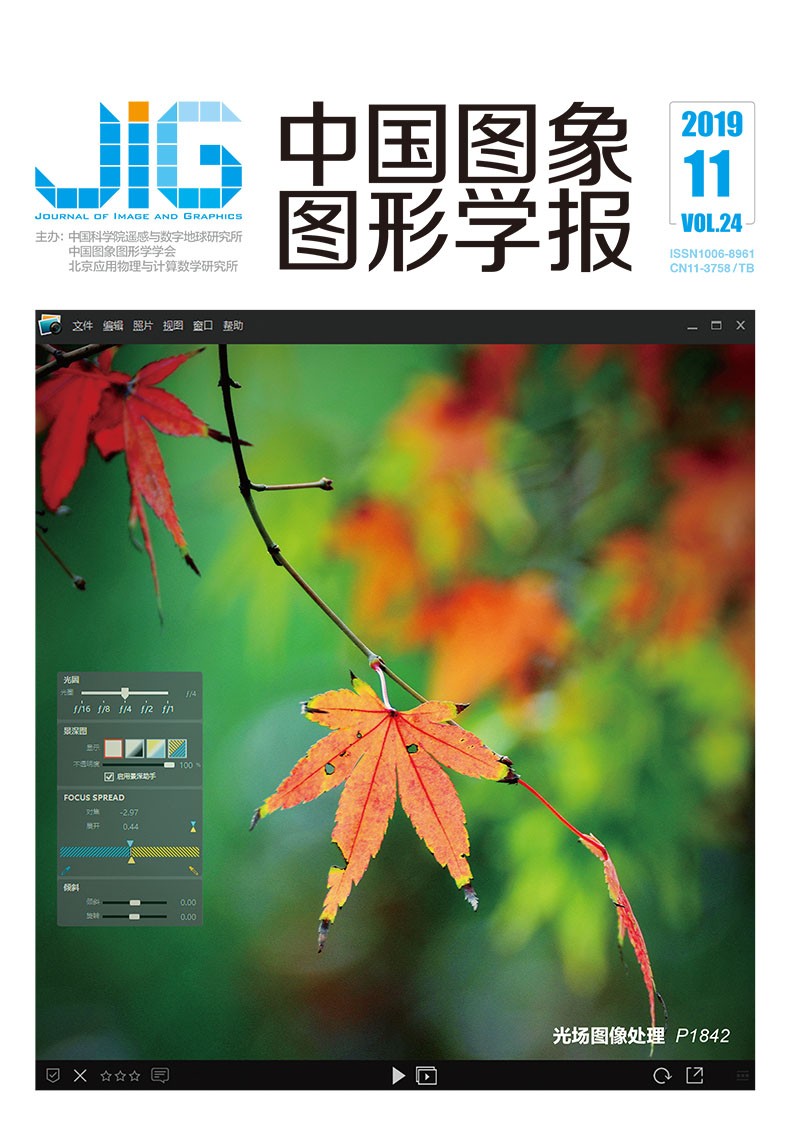
改进型DeepLab的极化SAR果园分类
摘 要
目的 针对农作物种植趋向集中化、机械化和庄园化的现状,高分辨率遥感影像精准识别技术已广泛应用于农作物分类。研究表明,采用先进的深度学习算法挖掘高分辨率农作物影像信息,有利于高效地分析农作物长势和参量预测,为此,提出一种改进型深度神经网络(DeepLab)的高分辨率果园遥感图像分割算法。方法 首先提取原始数据的极化特征和基于相干/非相干分解的特征组成高维特征空间,然后选用流行学习降维方式获得最优3通道特征向量构成伪彩图,利用深度可分离网络(xception)、空洞卷积网络(atrous convolution)、多孔空间金字塔(ASPP)和上采样(upsample)搭建DeepLab的编码解码过程(encoder-decoder),最后将伪彩训练集和标签导入搭建的DeepLab进行训练并保存模型,利用模型对目标数据进行有效分类。结果 利用本算法对中国海南某地的Ⅰ期芒果、Ⅱ期芒果、Ⅲ期芒果、槟榔、龙眼5类水果进行分类,针对不同时期的同一种水果分类错误率下降了8%左右,相比传统的果园分类算法,本算法的kappa系数提高了约0.1,总体分类精度(OA)也有一定程度的提高。结论 本算法在保证不同类别水果分类准确率的基础上,提高了不同时期的同一类水果的分类准确率,在一定程度上提高了农作物长势分析的准确性,保证了高分辨率果园数据分析的可靠性。
关键词
Polarized SAR orchard classification based on improved DeepLab
Wang Yunyan1,2, Luo Lengkun1,2, Zhou Zhigang1,2(1.School of Electrical and Electronic Engineering, Hubei University of Technology, Wuhan 430068, China;2.Key Laboratory of High Efficiency Utilization and Energy Storage Operation Control of Hubei Province, Wuhan 430068, China) Abstract
Objective With the growing national economy and the increasing demand for the quantity and quality of fruits, satisfying the degree of mastery of fruit farmers’ information on large-scale orchards has been difficult for traditional field research methods. Hence, determining how to accurately obtain the same fruit types in different fruit types and different mature states in high-resolution remote sensing orchard images by using remote sensing methods and image-processing methods to obtain orchard distribution and fruit growth information in a timely and rapid manner has become a research focus. Improving the classification accuracy rate effectively is conducive to the dynamic monitoring of large-scale orchard, which has far-reaching significance for promoting the sustainable development of the Chinese fruit industry. In recent years, combining artificial intelligence collection and analysis of high-resolution crop remote sensing images to analyze crop distribution, growth, and parameters has become an important field of agricultural technology development. Sample collection, image data preprocessing, image classification, and sample analysis from crop land data are cumbersome data-mining processes. Traditional machine-learning algorithms are widely used in data-preprocessing stages and image classification. Using traditional threshold segmentation algorithms can effectively classify different fruit types, and wavelet algorithm, support vector machine algorithm, and random forest algorithm as good classifiers can greatly improve the classification accuracy. When neural networks are once again valued and deeply explored, a series of networks, such as convolutional neural networks, deep confidence networks, and adversarial networks, is applied in image classification, segmentation, and recognition. The depth-mining ability of image feature information can be used to obtain a complete feature space effectively. Data with complete feature space and label are easy to be learned by computers to obtain training models, which greatly improve classification accuracy. High-resolution remote sensing image recognition technology, which focuses on crop planting, mechanization, and manorization, has been widely used in crop classification. Using superior depth-learning algorithms to mine high-resolution crop image information is beneficial for the efficient analysis of crop growth and parameter prediction. Method Atrous convolution is more advantageous than other convolutional networks. It can mine detailed underlying feature information, but can easily cause overfitting and feature redundancy because substantial information space needs to be considered. Popular learning algorithms can effectively perform features. Preliminary classification extracts the feature space that is most conducive to deep learning classification. The depth-separable network and the porous space pyramid can be regarded as feature-encoding processes, and the upsampling process constitutes the backend decoding process. In this study, an improved deep neural network (DeepLab) high-resolution orchard remote sensing image segmentation algorithm is proposed. First, the polarization characteristics of the original data, the features based on coherent decomposition, and the features based on incoherent decomposition are used to form a high-dimensional feature space. Then, the popular learning dimension reduction method is used to obtain the optimal three-channel feature vector to form a pseudo-color map, and a depth separable network (xception), a cavity convolution network (atrous convolution), atrous spatial pyramid pooling (ASPP), and upsample are adopted to build the encoder-decoder of DeepLab. Finally, the pseudo-color training set and the label are imported into the constructed DeepLab to train and save the model, which can be used to effectively classify the target data. Result The proposed algorithm can be used to classify five types of fruits, namely, mango, phase II mango, phase III mango, betel nut, and longan, in a certain area of Hainan, China. The error rate of the same fruit classification for different periods decreases by approximately 8% according to the high-resolution image feature information-learning process of mango, betel nut, and longan. Compared with the traditional orchard classification algorithm, the proposed algorithm presents increased kappa coefficient by approximately 0.1 and improved overall classification accuracy to some extent. The proposed algorithm not only has considerable effects on different types of fruit classification but also a more accurate sample division effect in different periods of the same fruit. Conclusion The algorithm improves the classification accuracy of the same type of fruit in different periods on the basis of preserving the classification accuracy of different types of fruits. The accuracy of crop growth analysis is improved to a certain extent, and the reliability of high-resolution orchard data analysis is ensured. The DeepLab network is advancing to high-resolution data classification. This network can be feasibly applied to determine the status of rice development in different periods in the future because of its superiority in the analysis of different maturity states of the same species. The health of large areas of rice can be monitored.
Keywords
|



 中国图象图形学报 │ 京ICP备05080539号-4 │ 本系统由
中国图象图形学报 │ 京ICP备05080539号-4 │ 本系统由